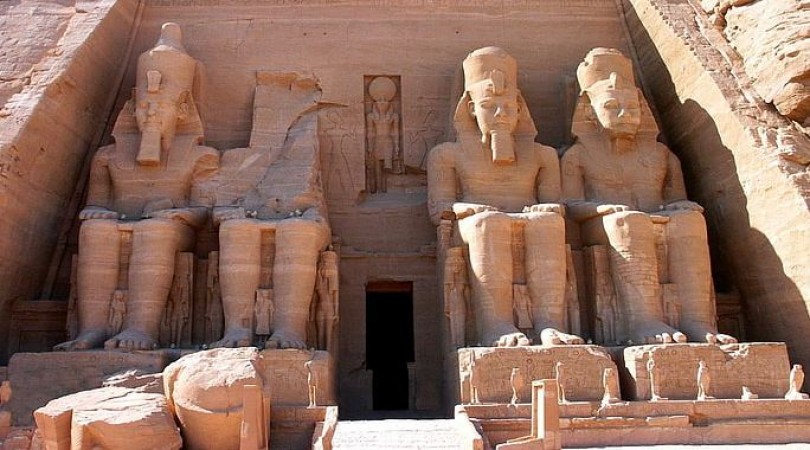
Ancient Egypt was a civilization known for its rich religious practices and beliefs. At the heart of their religious life were the majestic temples that dotted the landscape. These temples served as sacred spaces where Egyptians worshipped their gods and performed elaborate rituals. In this article, we will explore the significance of Ancient Egyptian temples and delve into the rituals that took place within their hallowed walls.
1. The Religious Importance of Ancient Egyptian Temples
Ancient Egyptian temples held immense religious significance in the lives of the Egyptians. They were considered the dwelling places of the gods and acted as intermediaries between the mortal world and the divine realm. Temples were constructed to honor specific deities and were believed to be the focal points of divine power. These sacred structures played a central role in religious ceremonies, rituals, and daily worship.
2. The Architecture of Ancient Egyptian Temples
Ancient Egyptian temples were marvels of architectural ingenuity and craftsmanship. They were built on a grand scale, featuring colossal pylons, towering obelisks, and intricate hieroglyphic carvings. The temples were designed as complex structures, comprising of various sections such as the entrance, hypostyle hall, sanctuary, and offering chapels. The layout of the temples symbolized the journey from the mortal world to the divine presence of the gods.
3. The Role of Priests in Temple Rituals
Priests held significant positions within the temples and were responsible for performing rituals and maintaining the sacred spaces. They acted as intermediaries between the gods and the people, ensuring the smooth conduct of religious ceremonies. Priests underwent rigorous training and were well-versed in the intricate rituals and chants necessary for worship.
4. Worship and Offerings in Ancient Egyptian Temples
Worship in Ancient Egyptian temples involved a variety of rituals and offerings. The priests and worshippers would approach the sanctuary, bearing gifts such as food, incense, and precious objects. These offerings were meant to sustain the gods and establish a reciprocal relationship between the divine and mortal realms. Temples were also equipped with sacred lakes or basins used for purifying the offerings before presenting them to the gods.
5. Rituals of Purification and Cleansing
Purification and cleansing rituals played a vital role in Ancient Egyptian temple ceremonies. Before engaging in worship, both priests and worshippers underwent purification rites involving ritual bathing and the wearing of clean linen garments. These practices aimed to cleanse the individual of impurities and prepare them for the sacred act of communion with the gods.
6. Festivals and Processions at the Temples
Ancient Egyptian temples were vibrant centers of festive celebrations and processions. Festivals were held throughout the year to honor specific deities and commemorate significant events. These lively gatherings involved music, dance, and theatrical performances. Processions, featuring elaborate floats and statues of the gods, moved through the temple complexes and the streets, allowing the people to express their devotion and seek blessings.
7. The Oracle and Divination Practices
Some Ancient Egyptian temples were renowned for their oracles, revered individuals believed to possess the ability to communicate with the gods and offer divine guidance. People seeking answers or advice would visit these temples and present their questions to the oracle. Divination practices, such as interpreting dreams or studying the flight of birds, were also conducted within temple precincts to gain insight into the future.
8. Temples as Centers of Learning and Administration
Ancient Egyptian temples were not only places of worship but also served as centers of learning and administration. They housed libraries and scriptoria where scribes meticulously recorded religious texts, scientific knowledge, and historical accounts. The temples also played a crucial role in the administration of the surrounding lands and the distribution of resources.
9. The Decline of Ancient Egyptian Temples
With the arrival of foreign powers and the spread of new religions, Ancient Egyptian temples gradually lost their prominence. As conquerors introduced their own religious practices, the temples fell into disuse and disrepair. Many of these once-magnificent structures were abandoned, and their treasures plundered or destroyed. The decline of Ancient Egyptian temples marked the end of an era and the loss of a vibrant religious tradition.
Ancient Egyptian temples were the epicenters of religious life, where the divine and mortal realms intersected. These awe-inspiring structures showcased the architectural prowess of the civilization and served as places of worship, learning, and communal celebration. Through rituals, offerings, and festivals, the temples fostered a deep spiritual connection between the Egyptian people and their gods. Although their glory has faded over time, the legacy of Ancient Egyptian temples continues to captivate the imagination and provide insights into one of the most remarkable civilizations in history.
Some special things about the 150-foot-long and 25-foot-wide statue of Adiyogi
Decoding the DNA of Indian Politics: A Historical Perspective
Kerala Devotees Engage in KARKIDAKA VAVU BALI Ritual Statewide